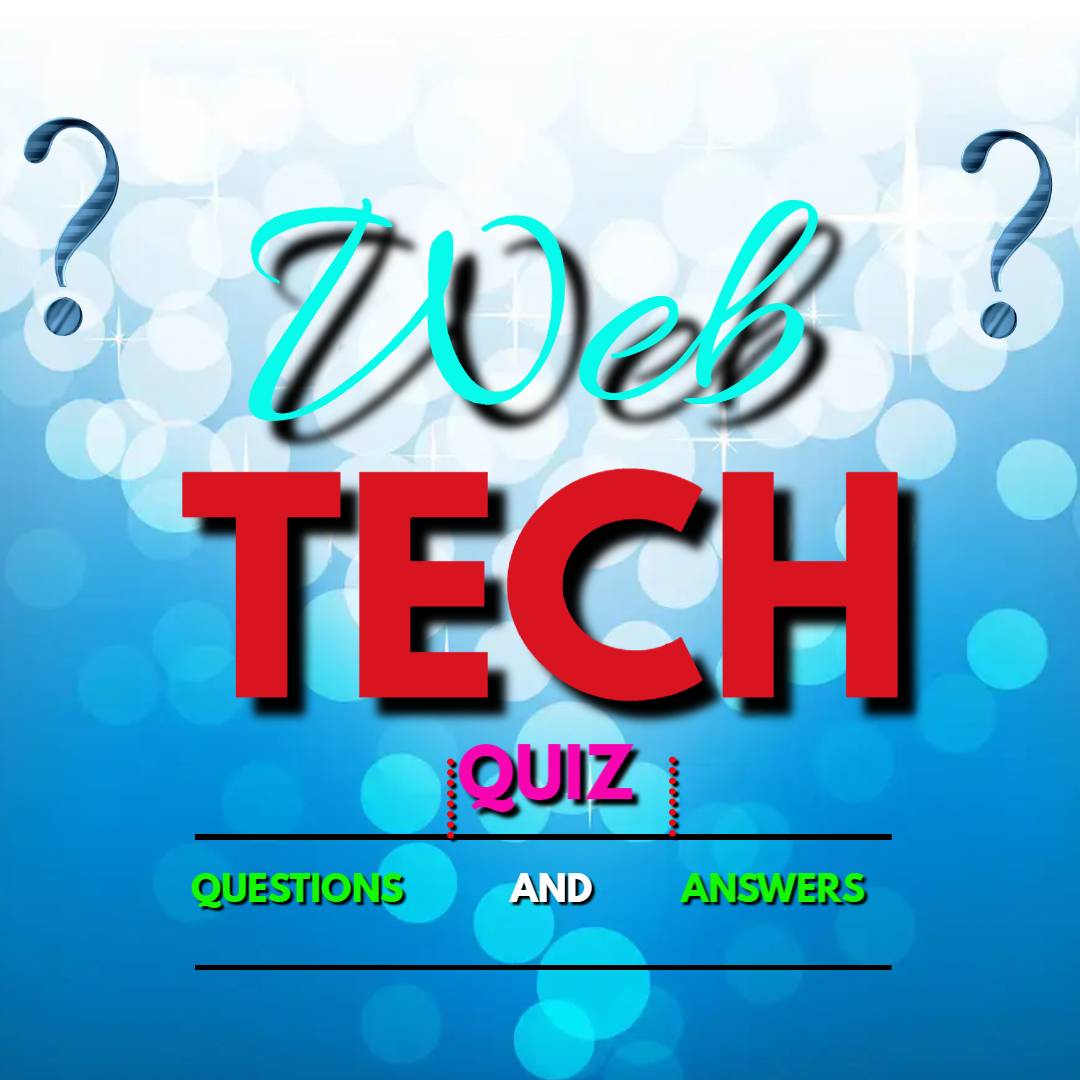Web Tech Questions and Answers
Read carefully and answer the following questions.
1. HTML, JavaScript, Java Applets, and other technologies can be executed on the client side because it is viewed by your browser on your computer.
Client-Side Applications
2. Applications on the World Wide Web that run on the user's server or computer and are executed by the browser installed on the user's computer.
Client Side
3. A scripting language used to design interactive Web sites.
JavaScript (JS) / Live script / ECMA script
4. A high-level programming language used to create applications for Web sites.
Java
5. A third-party entity that manages and distributes software-based services and solutions to customers across a wide area network from a central data center.
ASP (Application Service Provider)
6. Cascading style sheets are used to format the layout of Web pages. They can be used to define web page elements such as text styles and tables.
CSS (Cascading Style Sheets)
7. A grouping of technologies used to create dynamic and interactive web content that loads and updates at a faster rate of speed.
AJAX (Asynchronous JavaScript and XML)
8. An international consortium of organizations who work together to set standards for the Internet and the Web. The W3C was founded in 1994 by Tim Berners-Lee.
W3C (World Wide Web Consortium)
9. Short for Web browser, a software application used to locate, retrieve and also display content on the World Wide Web, including Web pages, images, video and other files. As a client/server model, the browser is the client run on a computer that contacts the Web server and requests information.
Browser
10. A common web development language created by W3C. A pared-down version of SGML designed especially for Web documents.
XML (Extensible Markup Language)
11. A program in which the source code is available to the general public for use and/or modification from its original design free of charge.
Open source
12. A free and open-source JavaScript library that is used by Web developers to navigate HTML documents, handle events, perform animations and add Ajax interactions to Web pages.
J-Query
13. Preparing data for storage and transmission by reducing redundancies and complexity
Encoding
14. The authoring language used to create documents on the World Wide Web
HTML (Hypertext Mark-up Language)
15. The Web development language that establishes a standard for defining mark-up languages. HTML is a type of SGML.
SGML (Standard Generalized Mark-up Language)
16. A standardized query language for requesting information from a database
SQUL (Structured Query Language)
17. A widely used, general-purpose scripting language embedded into the HTML source document and used to produce dynamic web pages.
PHP (Hypertext Preprocessor)
18. A common web development language created by W3C. A pared-down version of SGML designed especially for Web documents.
XML (Extensible Markup Language)
19. A hybrid between HTML and XML specifically designed for Net device displays. XHTML is a markup language written in XML and is a stricter and cleaner version of HTML.
XHTML (Extensible Hypertext Markup Language)
20. Short for Web browser, a software application used to locate, retrieve and also display content on the World Wide Web, including Web pages, images, video and other files. As a client/server model, the browser is the client run on a computer that contacts the Web server and requests information.
Browser
21. Sets international standards for computer languages so computers can communicate world-wide.
ISO (International Organization for Standardization)
22. A collection of information organized in to records of information so a computer program can quickly access and select desired pieces of data.
Database
23. A connection between one web page and another.
Link
24. A software tool that retrieves and displays web pages.
Webpages
25. A standard way of specifying the location of a web page.
URL (Uniform Resource Locator)
26. A language that uses tags to annotate the information in a document.
Markup Language
27. The syntactic element in a markup language that indicates how information should be displayed.
Tag
28. Part of a tag that provides additional information about the element.
Attribute
29. The newest HTML standard with a streamlined tag system and support for dynamic content.
HTML5
30. A language that allows the user to describe the content of a document.
Extensible Markup Language (XML)


